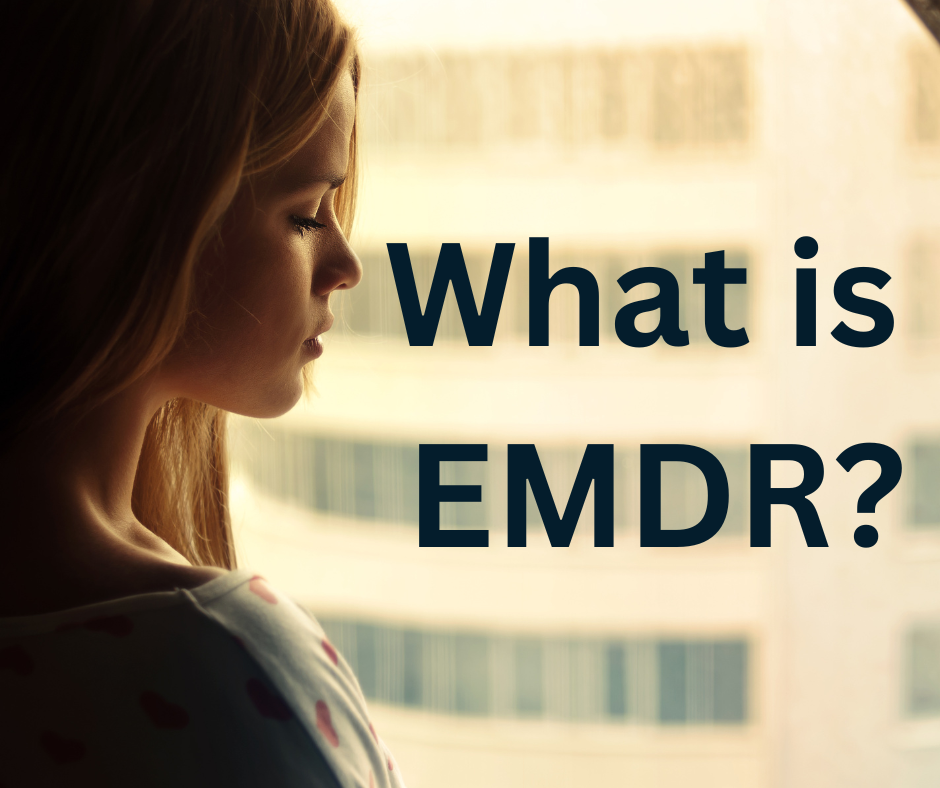
What is EMDR?
EMDR stands for Eye Movement Desensitization and Reprocessing. It is a psychotherapy approach that was developed by Dr. Francine Shapiro in the late 1980s. This method is now used to not only treat PTSD, but anxiety, depression, and other emotional disorders.
This type of therapy involves the use of eye movements, auditory tones, or tactile sensations to stimulate both sides of the brain while the individual focuses on a traumatic memory or distressing experience. This bilateral stimulation bypasses the part of the brain that stores traumatic and negative memories and has become stuck and helps to process the memory and reduce the intensity of negative emotions associated with it. EMDR processing helps you break through emotional blocks that are keeping you from living an adaptive, emotionally healthy life.
Eye movements and other forms of bilateral stimulation activate your problem-solving process, something that occurs during REM sleep when your eyes are darting back and forth. When focusing on a specific problem and its negative and positive emotions, sensations, and beliefs, and then adding bilateral stimulation, your brain begins problem-solving. Since you are focused on the specific problem, your brain can work through it more effectively than what may randomly come up with sleeping.
What happens during an EMDR Session?
During an EMDR session, the individual will typically be asked to recall a negative experience or distressing event while tracking the therapist’s finger or a moving object with their eyes, or listening to tones through headphones, or feeling a vibration in their hands. The therapist will guide the individual through the process and help them to reprocess the memory in a more adaptive way. This process helps you update your memories to a healthier present perspective.
Does EMDR work?
YES! EMDR is an integrative psychotherapy approach that has been extensively researched and proven effective for the treatment of trauma. EMDR therapy includes a set of standardized protocols that incorporate elements from many different treatment approaches and has relieved psychological trauma for millions of people of all ages. In addition, EMDR therapy has been endorsed by the American Psychiatric Association and the International Society for Traumatic Stress Studies.
Other statistics on EMDR:
- A significant percentage of single-trauma victims no longer exhibit symptoms of post-traumatic stress disorder (PTSD) after only three 90-minute sessions of EMDR therapy, with a reported success rate ranging between 84-90%. *
- 100% of single-trauma victims and 77% of multiple-trauma victims were no longer diagnosed with PTSD after only six 50-minute sessions. Another study reported that 77% of combat veterans were free of PTSD following 12 sessions of EMDR therapy.
- A randomized controlled trial comparing EMDR therapy to CBT found that both treatments were equally effective in reducing symptoms of PTSD, but individuals who received EMDR therapy experienced a greater reduction in anxiety symptoms.
- A study of individuals who experienced a single traumatic event found that those who received EMDR therapy had greater reductions in PTSD symptoms compared to those who received supportive counseling.
Overall, EMDR therapy has been found to be a successful treatment option for not only trauma-related conditions but other mental health disorders as well, with comparable effectiveness to other evidence-based treatments. It is important to note that the success of EMDR therapy may also depend on factors such as the therapist’s experience and the individual’s willingness to engage in the therapy process.
While EMDR therapy is an effective form of treatment for individuals coping with anxiety, PTSD, panic, and/or trauma, it may also be used in conjunction with other types of therapy. It is recommended to discuss various combinations of therapies and techniques with one of our qualified therapists to determine the most effective approach for an individual’s specific needs.
*stats and research provided by the EMDR Institute & Kaiser Permanente
Unlike CBT with a trauma focus, EMDR does not involve detailed descriptions of traumatic events, direct challenging of beliefs, extended exposure, or homework.
EMDR is given the same status as CBT as an effective treatment for reducing symptoms of both active and chronic PTSD (American Psychiatric Association, 2004)
EMDR was one of four therapies given the highest level of evidence and recommended for treatment of PTSD (Department of Veteran Affairs & Department of Defense, 2010)
EMDR is an evidence-based practice for the treatment of PTSD, anxiety, and depressive symptoms (SAMHSA National Registry of Evidence-based Programs and Practices, 2011)
Trauma-focused CBT and EMDR are the only psychotherapies recommended for children, adolescents, and adults with PTSD (World Health Organization, 2013)
